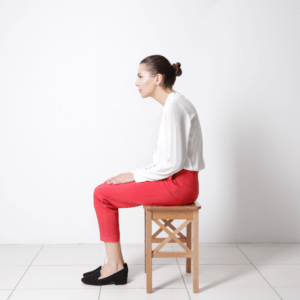Do you ever suffer from fingers or toes that turn blue or white? Are they tingly or painful?
Have you heard of Raynaud’s phenomenon? 🤔 You might be experiencing it!
Here’s your chance to learn more about it if you haven’t heard of it before.
Raynaud’s actually a very common phenomenon, and isn’t usually a cause for concern, but sometimes it can be a sign of a more serious underlying condition so it’s worth investigating.
Raynaud’s can cause some parts of your body like fingers and toes to feel numb and cold.
And despite being such a common phenomenon, many people still haven’t heard of it. Here’s what you should know!
What is Raynaud’s?
Raynaud’s (pronounced ray-NORDS) is a condition that affects your blood circulation 🩸. It can cause some parts of your body like fingers and toes to feel numb and cold 🧊 when you are stressed or subject to cold conditions.
It’s more common in women than men, and more common in those who live in colder climates 🥶. Raynaud’s causes blood vessels to narrow and almost completely shut down, impeding the blood flow.
What causes it?
There are two types of Raynaud’s disease, primary and secondary. Primary refers to Raynaud’s that affects people without a secondary medical condition.
The exact causes of primary Raynaud’s is often unclear, but it’s thought to be a hyperactivation of the sympathetic nervous system. This is known to cause an extreme narrowing of the blood vessels, also known as vasoconstriction, which is how the blood circulation is impeded.
Secondary Raynaud’s, on the other hand, can be caused by diseases of the arteries, diseases in the connective tissue, carpal tunnel syndrome, side effects from medications and injuries like frostbite, a broken wrist or local surgery. It can be connected with diseases like rheumatoid arthritis and lupus. If you have a repetition hobby requiring repetitive movements, this can be a risk factor, as can any job that uses vibrating tools (like jackhammers). Be aware that smoking can also increase the chances of developing the condition. The condition can also run in the family.
The underlying cause can therefore vary a lot, from being a reaction to the environment or lifestyle choices through to more serious underlying health conditions. All of these factors can be considered if you’re managing the condition.
Seek out advice if you’re concerned that the symptoms you are experiencing are getting worse – it’s worth checking that this is not a sign of a more serious underlying condition like rheumatoid arthritis or lupus.
What are the symptoms of Raynaud’s?
If you’re cold, anxious or stressed 😰, you might notice your fingers and toes changing colour – this could be blue as blood vessels react, white, or a lighter colour as blood flow becomes restricted. During an attack, the affected areas of your skin usually turn white first, then blue while feeling cold and numb. As you warm up again and your circulation improves, the affected areas may then turn red, throb, tingle, or swell up.
Other symptoms can include general pain, numbness, pins and needles, prickly sensation or stinging pain and difficulty moving the affected areas of your body 🤕.
It’s not just fingers and toes – something your ears 👂, nose 👃, or lips 👄 can be affected by the condition. Symptoms can last a few minutes or even up to a few hours.
What can you do to care for yourself if you have Raynaud’s?
Keep your body as healthy as possible by eating a diverse range of foods, especially fruits and veggies!
There are many things you can do to take care of yourself if you suffer from Raynaud’s. This includes:
· Keeping your home nice and warm 🏠 – make sure your environment is comfortable enough not to exacerbate any temperature issues that may trigger Raynaud’s.
· Wearing plenty of warm clothes – especially during the colder seasons and protecting your hands and feet 🧤.
· Exercising regularly 🏃♂️ – this can help to improve the blood flow and circulation in your body but getting things moving.
· Relaxation techniques 🧘♀️ – this could include meditation, breathing exercises, or yoga to help you feel more relaxed and less stressed.
· Eating a healthy and balanced diet – keep your body as healthy as possible by eating a diverse range of foods, especially fruits and veggies 🥦.
· Avoid smoking 🚬 – Smoking can really impact your circulation!
· Reduce or eliminate having too much caffeine – Again, this can really trigger symptoms, so take note of how much coffee, tea, coca-cola or other caffeinated drinks you’re consuming in a day.
When you are experiencing an attack, it can be helpful to soak the affected parts of your body in warm – but not hot! – water 💦, which can alleviate symptoms and prevent them from worsening.
While chiropractic care cannot cure Raynaud’s, we can certainly help improve your joint flexibility and this can also impact your circulation for the better.
If you have any questions, give us a call and we will advise you on what you can do to ease the frequency or severity of your Raynaud’s phenomenon.





